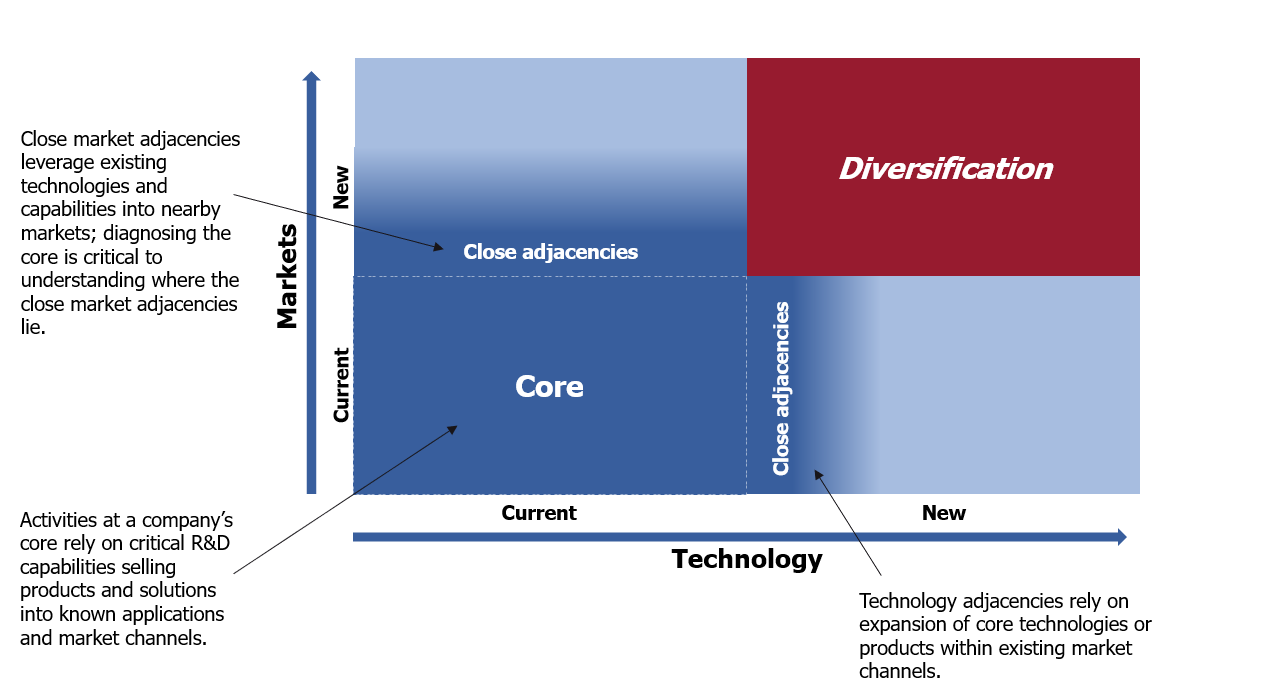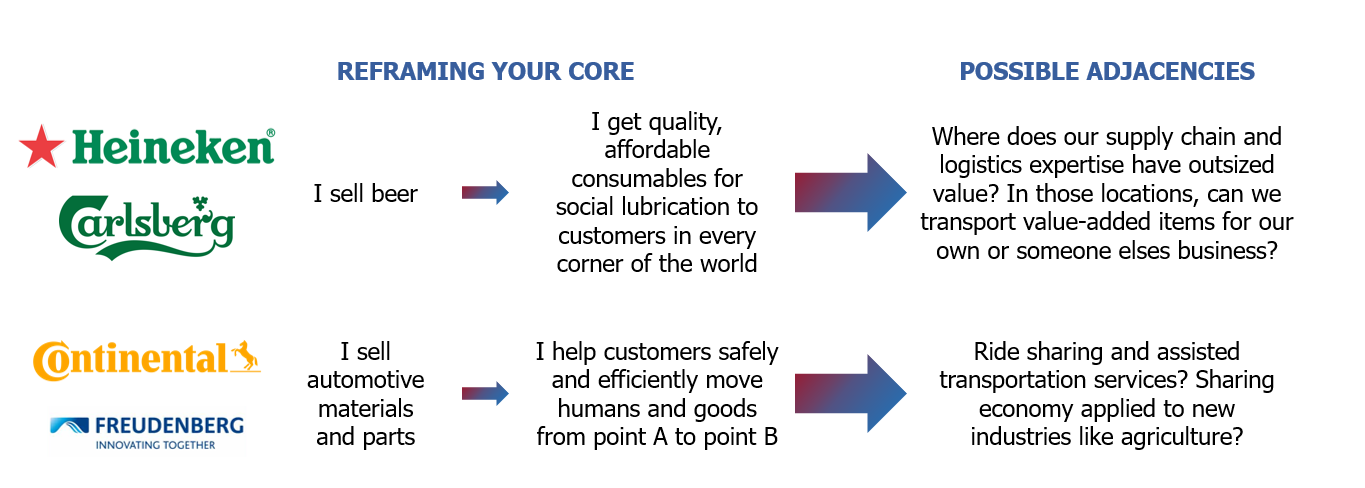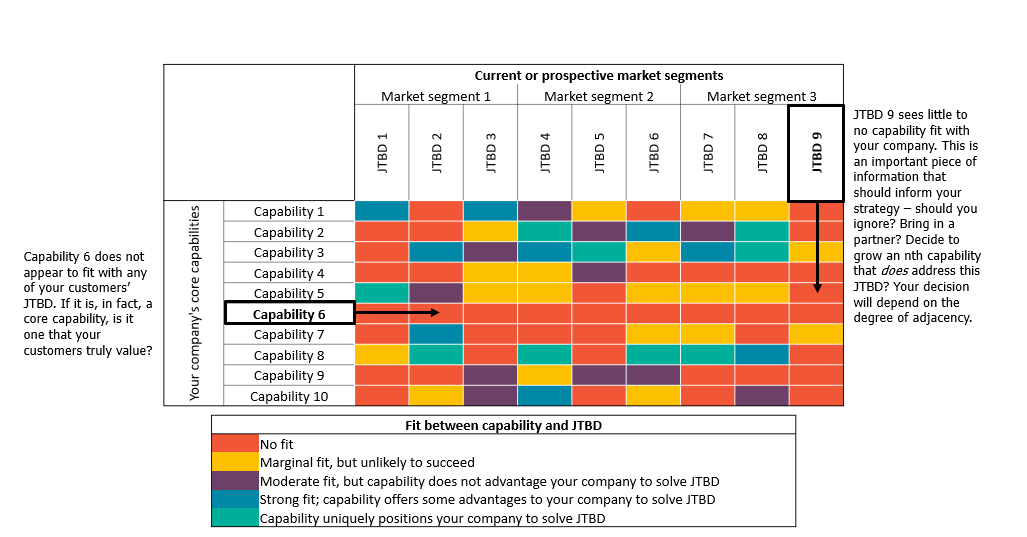My colleague recently gave a webinar on catalyst-reactive innovation strategies, pointing to transformational events that accelerate known megatrends sometimes in unforeseen and unpleasant directions, necessitating a balanced innovation strategy that addresses all possible outcomes.

Today, we’re in the midst of one of the “deadliest” catalysts, which has completely upended our lives and businesses – possibly a preview to other pandemics that experts are sure will come. Economies are struggling, most of us are in standby mode or working from home, relying on virtual tools like Zoom to conduct operational meetings, and consuming hour after hour of webinars and podcasts to keep current. While we’ve seen waves of digital innovation enabling us to better adapt to this new reality, how do other industries continue to innovate – especially in B2B, where a lot of innovation relies on the circulation and Brownian motion of ideas and brain-to-brain exchanges? Absent watercooler chats, we need a more systematic approach to find growth.
What is an adjacency?
We’ve all heard of market adjacency – leveraging what you do well as a path into new areas. This is a long-studied, with many famous case studies from illustrious brands like Amazon, Apple, Tesla, Nike. While executives often favor this growth strategy, empirical data shows that roughly three in four of market adjacency expansions actually fail (who remembers Apple’s Newton PDA?), making it a high-risk option for growth – particularly as companies attempt to leapfrog further away from their core in a single bound in search of “breakthroughs.” Needless to say, this is not a great time for a high-risk strategy. On the other hand, scrapping innovation activities altogether is short-sighted, and antithetical to a catalyst-reactive strategy. We need to rethink adjacencies.


To do this, we need to reframe the way we think about innovating using adjacency. The conventional way of thinking about business is through industry verticals – cordoning off an industry space within a relatively narrow set of vertically linked user needs and using this as the basis of innovation. This is a great way to start innovating, as goal-setting tends to be simpler and more targeted – what we often see within business units. Identifying customer use cases also becomes simpler within verticals, since this is also the way industries organize their businesses, and customers in each vertical can readily rattle off wish lists of how technology improvements could solve their problems, typically framed as “I need something that does X.” However, once a company has built a strong core set of capabilities (we’ll come back to this later), this approach can have diminishing returns.
Henry Ford famously summed up the main challenge with relying only on the vertical approach to innovation:
“If I had asked people what they wanted, they would have said faster horses.” ― Henry Ford
We recently pointed out practical shortcomings in the open innovation funnel, especially in today’s era of high noise-to-signal ratio, and called for an update – perhaps through finding new and creative ways to create market pull in addition to traditional technology push [“build it and they will come”]. But, in the B2B world, creating market pull is hard: imaging trying to inspire equal customer fervor for a new bio-based methacrylate monomer as Apple did for its first iPhone. Instead, I propose we find more systematic ways to identify and uncover unmet needs across verticals in a resource-light manner, since most of our companies are cash-strapped and avoiding the usual innovation water coolers for the time being.
This brings us to horizontal innovation, or leveraging an existing technology into new markets and applications – which necessarily demands a cross-vertical view. The late Clayton Christensen developed an insightful framework for this type of analysis called “customer jobs-to-be-done.” Here, we no longer worry about “what” the customer wants, but why they want it. The customer is asking for a bio-based methacrylate, but the “why” behind it is to provide their end users with sustainable materials to make safer yet durable consumer products. Often, when customers express needs (i.e. bio-based methacrylate), they’re actually talking about solutions. Too often, companies and their customers fail to diagnose the why behind the need, leading to riskier adjacency bets than originally intended or realized. For example, pursuing simply the ask, bio-based methacrylate, might blind you, the putative solution provider, to other options that could be better, faster, cheaper, and importantly, just as acceptable to your customer. In other words, you’ve self-limited the scope and probability of your potential success!
Applying horizontal innovation then requires that we get two things right:
- Better understanding your core.
- Better diagnosing the “job to be done”.
better understanding your core
In order to find good adjacencies through horizontal thinking, the logical first step is to define your core: what are the fundamental technologies or capabilities that deliver your unique value to your customers. Often this is taken for granted knowhow. Especially in R&D-driven organizations, this might require reframing:

This exercise can be carried throughout the organization, forcing scientists, engineers, and business leaders in your company to take careful inventory of core and non-core technologies and in the process expand the field of vision. The process should also involve your customers, and sometimes your customers’ customers, to get a true idea of whether your perceived value propositions are recognized as such outside the organization. If a capabilities-mapping exercise is being done only at the VP and C-levels of the organization, or if you’re identifying 60 core capabilities at each level of the organization, you’re likely doing it wrong – the key is to be inclusive, objective, and critical.
better diagnosing “jobs to be done”
Thinking about jobs to be done (JTBD) in a true sense is an exercise in design thinking. We as innovators are asked to think beyond the stated need “I need something that does X” to truly understand what pain points the customer is looking to address throughout his/her experience. Once again, this can be done at all levels of the organization, considering your customers’ entire journey when interacting with your company and product. In an R&D context, this requires us to reframe the science and engineering challenges from a technology perspective to a solution perspective – and don’t forget to consider how your customer finds, compares, and buys your solution!
This approach can also be reversed. In our day-to-day, we frequently come across new technologies targeting one or another application. Applying horizontal thinking involves constantly trying to match this to a known JTBD in your own sphere – even if it is in an entirely different industry. Tech scouts in paints and coatings regularly find new ingredients and additives from industries like textiles, paper, packaging, cosmetics, pharma. This is an excellent way to shop for exciting new solutions (provided you can readily identify matching JTBD) that are already commercial and thus de-risked at the commercial scale.
FINDING THE SWEET SPOTS

The final step can be summarized with a simple heat map answering the question “Which (if any) of our core capabilities are best suited to address our customers’ most important JTBD?” Overlaying a customer-focused JTBD analysis with a thorough capability map can yield a robust roadmap for your company’s innovation opportunities – thus directing your innovation team to focus on scouting for or developing solutions with the greatest chance of success. Once you’ve successfully analyzed your targets’ JTBD, think hard about others that might have similar JTBD – even in entirely different markets. You might be astounded by what you realize through this process of discovering strengths you didn’t know you had, and problems to solve that are more widespread than you thought! Simply undertaking this process can also impart horizontal innovation-based thinking culturally into your organization, find new mass markets, and become a permanent source of competitive advantage.
